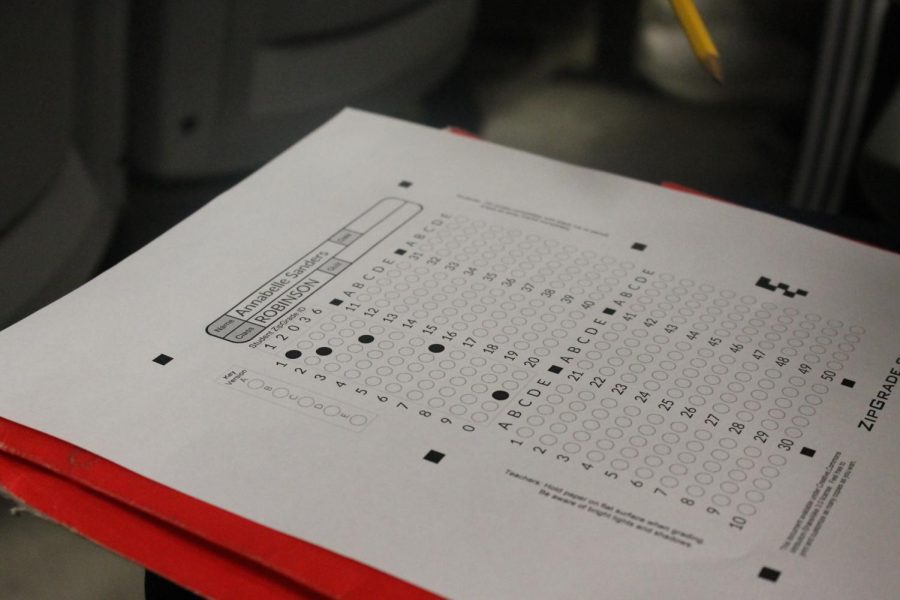Your heart is pumping, and your hand is cramping. You’re finishing up your test, making sure to turn it in before time is called. You turn it into the bin, and a wave of relief hits you. Then, suddenly, the words ‘now trade and grade’ are said, and the whole room seems to jump in fear.
Personally, I believe that peer grading is a downright lazy way of running a classroom. I have been in classes where the only reason any test grades are in the grade books is because of peer grading. With Canvas, I find it to be unfathomable that anyone would still want to peer grade with a feature that allows for online canvas tests to be automatically graded and put straight into the grade book. With this program, there is nothing the teachers need to do except make the questions. Furthermore, scantrons are another great option for a quick and easy grading method that’s on paper. While these are technically lazier than peer grading, I don’t believe it should be the student’s responsibility to do the teacher’s job, and these alternatives uphold that idea and allow for a win-win situation.
With peer grading, the chance of inaccurate grading goes up. In my sophomore year, someone once took off points on my quiz because I didn’t write in complete sentences, even though it was specified by the teacher that it didn’t need to be. I think when things get graded incorrectly by peers, it creates a lot of unnecessary tension and conflict within a classroom. Obviously, this is one of the last things that is needed in a classroom. I think if we didn’t have peer grading, and therefore less conflict, it would create a better community for Robinson as a whole.
Peer grading is meant to save time for the teacher; however, it takes time away from the students. In addition to having to do the test in the first place, you then have to grade it, which may take an extra 10-20 minutes depending on how long the test was and what style of questions there were. A multiple-choice style test would be much faster to grade than written response questions. Eventually, these 10–20-minute increments will begin to add up over time, and then suddenly this lost time will turn into an hour.
Peer grading can also be super annoying with written response style tests. There isn’t just one definite way to write an answer. If there’s only one possible correct answer, typically, grading for students is a bit easier. However, with AP style questions, there are multiple correct answers that could be given. What makes it more difficult is that the “answer sheet” doesn’t actually list all the possible answers. The students grading these papers don’t have as much experience and knowledge of the subject as the teacher does to be able to determine if an answer is correct if it is not listed on the answer sheet. Furthermore, sometimes it can be confusing with bad handwriting, weirdly worded answers and/or grammar mistakes. Teachers seem to possess this superpower of being able to read handwriting that to me looks like chicken scratch. With both of these factors, it can be difficult for students to receive accurate grades in written response questions.
Sometimes, teachers justify trading and grading as a way to benefit themselves, and I do believe teachers do not get compensated enough for the work that they do. This method to make less work for them sounds great in theory, but in reality, this is a faulty method of grading. There are better alternatives, so why are students still grading each other’s papers? It just doesn’t make any sense.


